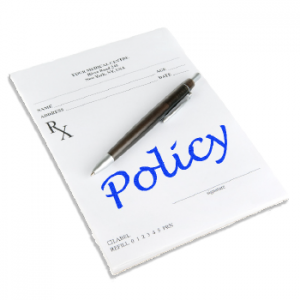 With policymakers in federal and state governments slowly shifting emphasis from coverage to considerations of cost, the drivers of health care expenses in America have emerged as a focus of conversation. Upwards of 80 percent of our national health expenditures goes toward the direct delivery of health care.1 Of the portion that is spent on actual patient care, the three largest components have been hospital care (33 percent), physicians and clinics (20 percent), and prescription drugs (10 percent). Hiding inside the biggest slice of the pie, emergency department care often becomes a boogeyman, branded as the place for “expensive” and “unnecessary” care.
With policymakers in federal and state governments slowly shifting emphasis from coverage to considerations of cost, the drivers of health care expenses in America have emerged as a focus of conversation. Upwards of 80 percent of our national health expenditures goes toward the direct delivery of health care.1 Of the portion that is spent on actual patient care, the three largest components have been hospital care (33 percent), physicians and clinics (20 percent), and prescription drugs (10 percent). Hiding inside the biggest slice of the pie, emergency department care often becomes a boogeyman, branded as the place for “expensive” and “unnecessary” care.
Explore This Issue
ACEP Now: Vol 38 – No 04 – April 2019Nevertheless, the care emergency physicians deliver to the public 24-7-365 represents one of the few places within our fragmented system where rapid diagnostic decisions, quick treatment, and convenience coincide to bring tremendous value to patients. Other physicians realize this, which is why they keep referring their patients to us.2 Yet assumptions about the emergency department lead to it being singled out as an ideal place to cut corners and save a few dollars out of the $3.5 trillion annual U.S. health care spend.3
While ACEP has gone to great lengths to explain to policymakers that the direct costs of emergency care account for as little as 2 percent of our nation’s total health expenditures, other reliable estimates suggest that our attributable expense is as high as 10 percent.4
A recent study, reviewed in an EMRA+ PolicyRx Health Policy Journal Club article, provides an even more eye-popping perspective. The emergency department’s role in health care is quite large, impacting almost half of all hospital care, which is known to be the largest slice of the health care expenditure pie. As other clinicians continue to use the emergency department as an access point for their patients’ unscheduled acute care or as a rapid diagnostic center, our slice of the health care pie will inevitably increase. Ultimately, this will further magnify the attention on emergency care of those minding the national health care piggy banks. Instead of antagonizing the emergency medicine community, policymakers and payers should partner with us to identify solutions to bend the cost curve.
References
- Peterson-Kaiser Health System Tracker. Accessed March 19, 2019.
- Gindi RM, Cohen RA, Kirzinger WK. Emergency room use among adults aged 18–64: early release of estimates from the National Health Interview Survey, January–June 2011. National Center for Health Statistics website. Accessed March 19, 2019.
- NHE Fact Sheet. Centers for Medicare and Medicaid Services website. Accessed March 19, 2019.
- Jacobson L. Does emergency care account for just 2 percent of all health spending? Politifact website. Accessed March 19, 2019.
Pages: 1 2 | Multi-Page






No Responses to “Numbers Say Emergency Care Is One of the Best Values in Health Care”